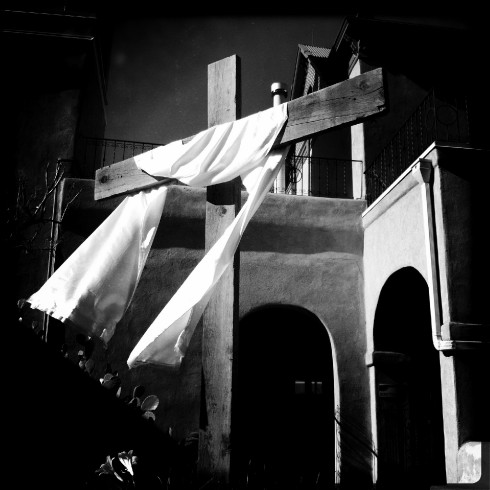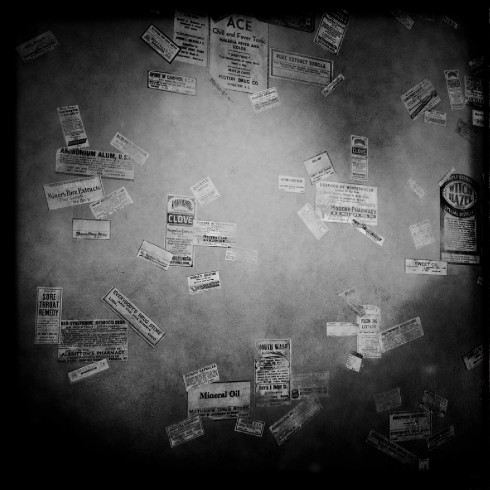What's with the title, you ask? Click here for the visual accompaniment, and read on, my friends.
This past summer, my buddy Brian Moore and I thought it would be a swell idea to drive out to Santa Fe, NM for a few hours and capture the sights, sounds, and smells (some good, some not-so-good) of the downtown plaza with our DSLR cameras. We got some great shots of the local churches, the people, and even one of "Doc," known as the "unofficial street mayor of Santa Fe" and one of the most photographed people who resides there. Although the shots we got were to our liking, one of the most impressionable moments happened earlier that morning and stuck with me throughout the day. It actually stuck a lot longer, since I feel the need to share it now.
When we first arrived and left the parking lot, we had to pass through a local market that looked like a small art fair that was being held throughout the weekend. Mostly the usual stuff, like pottery, paintings, photography and the like, but one artist named Josef Tornick begun telling us about his photography projects. Lots of his pieces were captured on 35mm film and were older than many of our children (with a few of his pieces looking older than me), but a lot of his work was also though a digital medium, many even captured with his iPhone.

Yes, his iPhone. He was selling his work that was created with a smartphone camera.
When we think iPhone photography, most of us either think of Facebook selfies or Instagram pictures of our lunch. Many of us don't think of high quality images of the architecture of Machu Pichu, Italy, or Egypt and hear the story of the personal or financial struggle to arrive there, nor do we hardly see images of the locals of Singapore or Vietnam and hear the stories behind them. When we see digital images comparable to the old photographs of WWII-era dust bowl farmers with gut-wrenching life stories, we usually don't think, "man, that iPhone takes some great pictures."

I've taken my DSLR with me to a good amount of events and captured lots of amazing candid shots of people and places. However, many of the pieces I show to people usually receive a mixed response when I tell them that the particular image I'm showing them is from an iPhone, as if it downgrades my talent or my work to some degree. As with any art form, it's the mind and the eye behind the artist that creates the talent and the piece. If I'm somewhere and I see a beautiful flower, or can appreciate the architecture of a church, and I don't have my heavy DSLR slung over my shoulder (yes, I had to purchase a sling strap for comfort and to spare my neck), I'll whip out my iPhone and take a picture with it. I probably would be more reluctant to use it, had I not been introduced to the Hipstamatic iPhone app shortly after its creation and release.

I know I've plugged the Hipstamatic app a few times, but anyone who's familiar with the uncertainty of shooting with film knows that any application of filters or special films, in most cases, can't be reversed once the photo has been captured. It's a done deal. What I love about this app is that, because you pay for it's production of every "film" and "lens" release, not only is one more careful when picking a combination of lens and film, but is also more prone to take pictures of more than just food. Because it can't be reversed once the photo is taken, I can appreciate this digital app because it makes taking photos fun, and the need for evaluating a film/lens combination to be compatible with my subject is exciting again.

Here's my message, or whatever's left of it, in a nutshell: don't feel any guilt the next time you see a smartphone photo that moves you. Art is life, and life is beautiful (most of it anyway). Take the time to appreciate the work, not just the tools.
Respectfully,
Matt

0 Comments